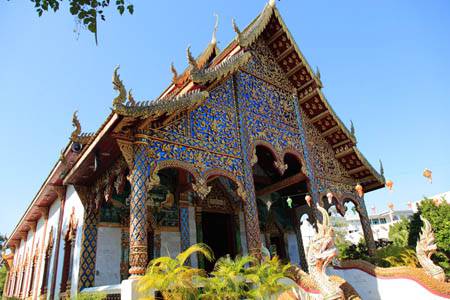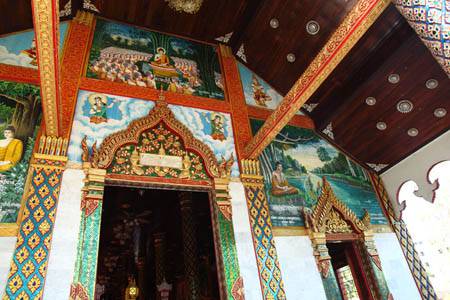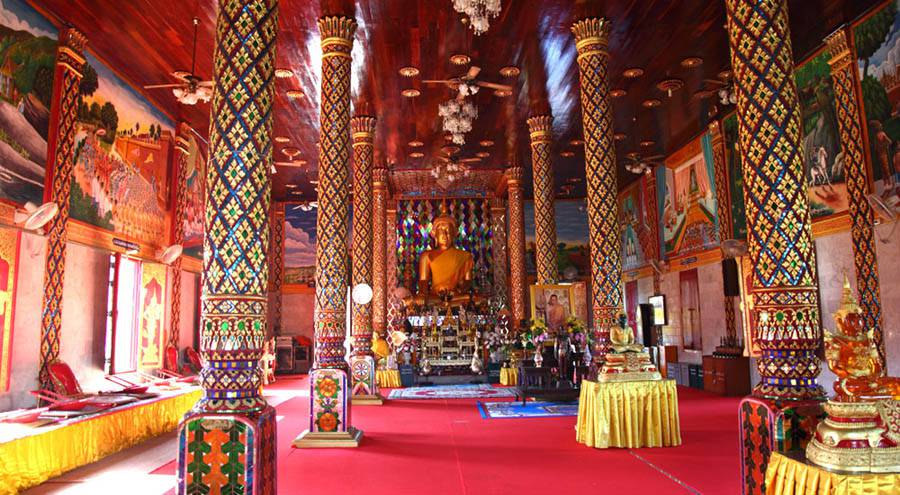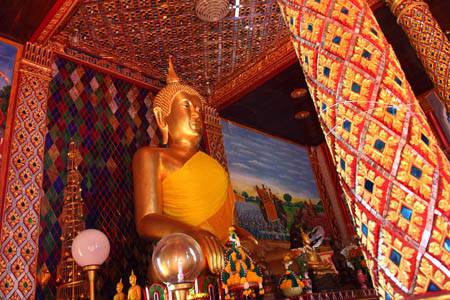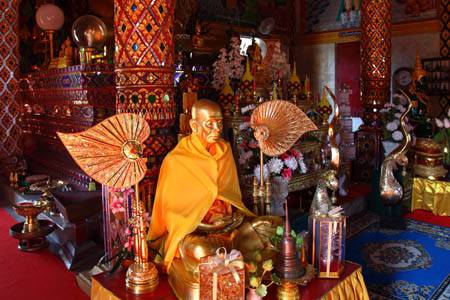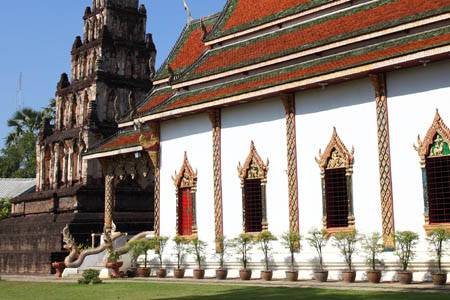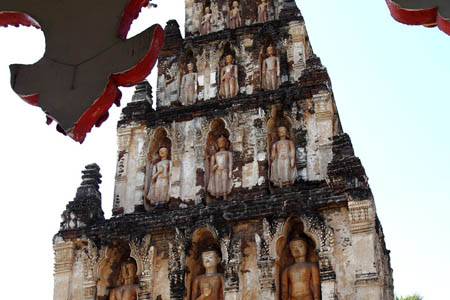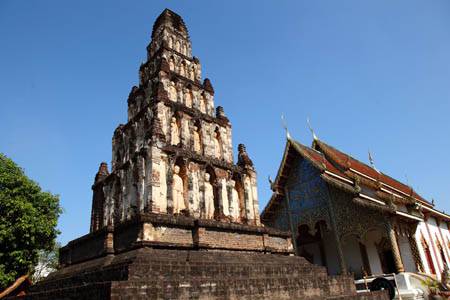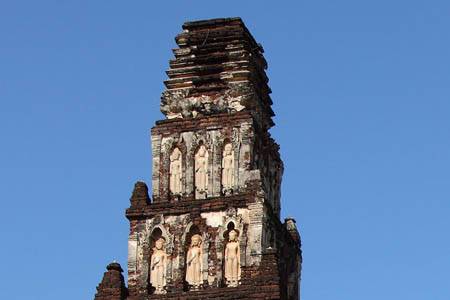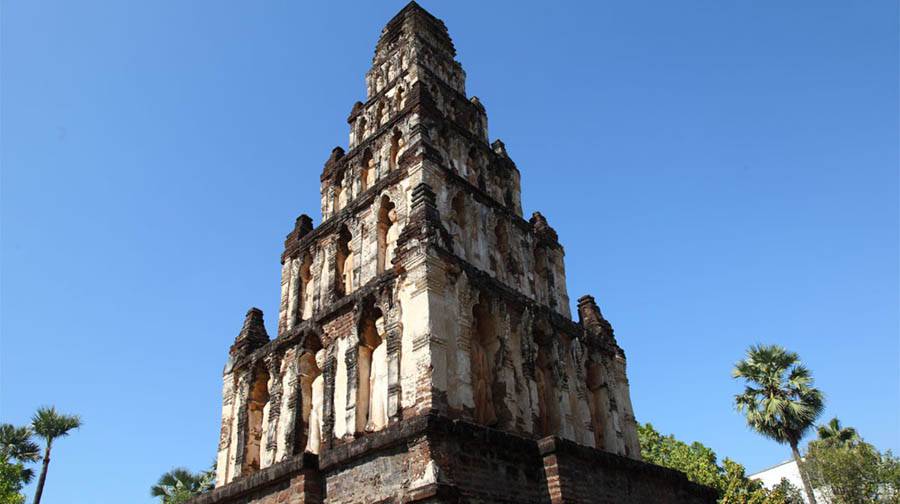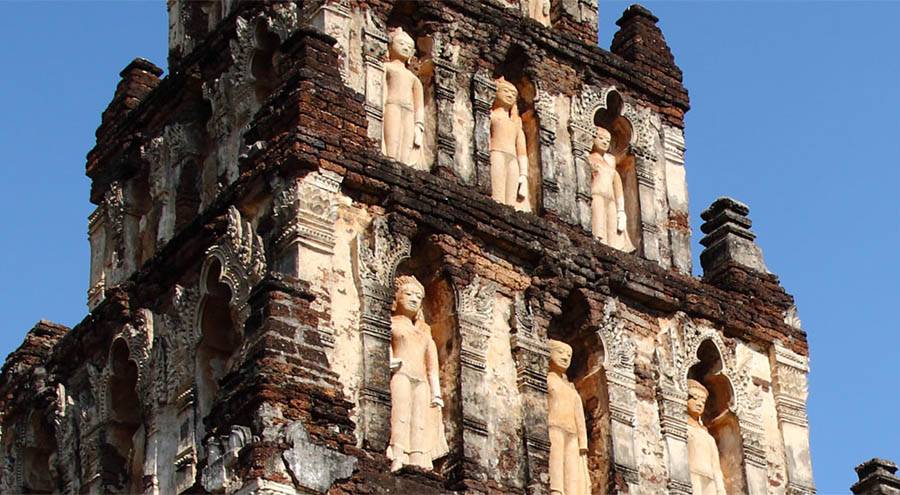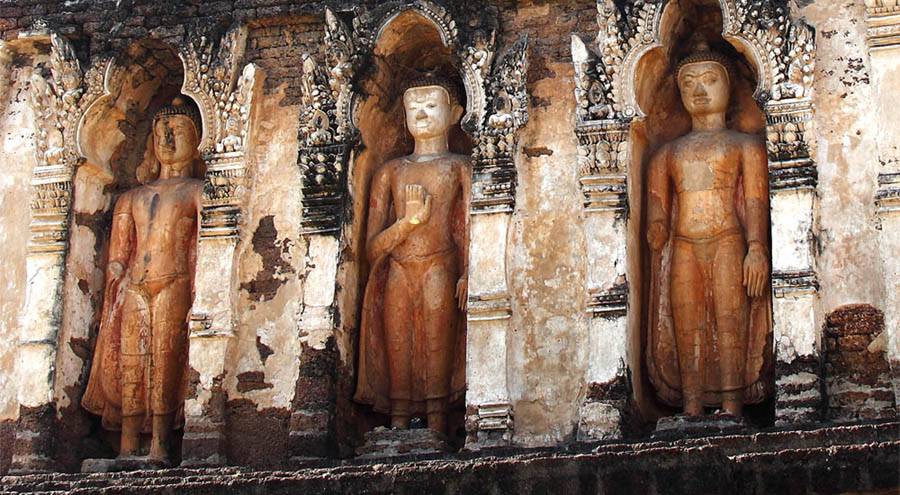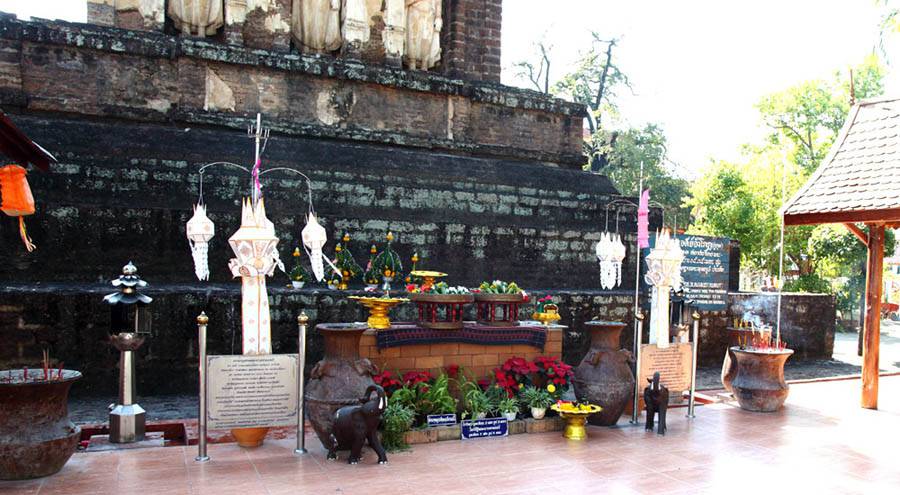Lamphun - Wat Cham Thewi
Photo Gallery of Wat Cham Thewi (or Wat Chama Thewi) in Lamphun, Northern Thailand.
(Lamphun is one of the oldest cities in Thailand and is well-known as the first royal city of Northern Thailand. It was called "Haripunchai" and flourished for a long time. The town is very peaceful, situated along Kuang River (tributary of Ping River), about 30 kilometers and about 30 minutes by car from Chiang Mai, the major city in northern part.)
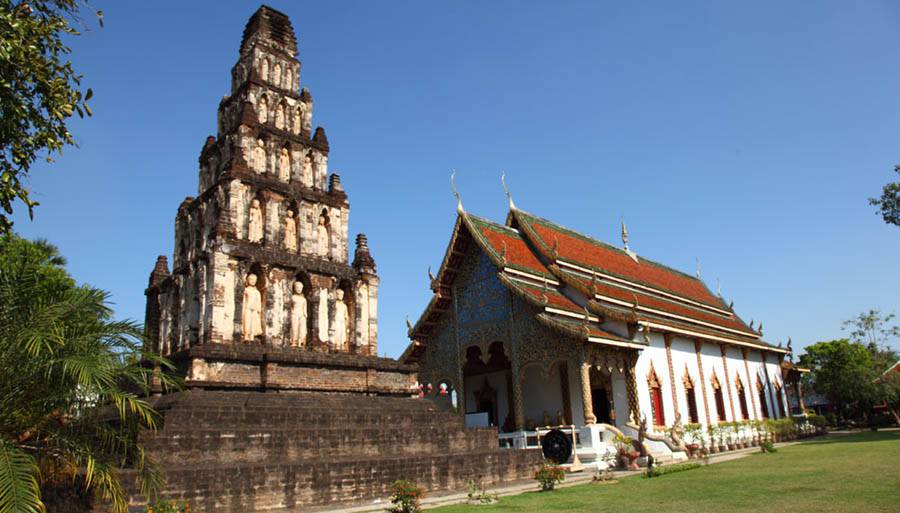 This temple is called "Wat Cham Thewi" or "Wat Kukut" (Wat Jam Thewee on a Google map) after the well-known chedi in this temple, located about 1.5 kilometers
to the Northwest of the famous royal temple Wat Prathat Haripunchai which is situated around the center of Lamphun city.
This temple is called "Wat Cham Thewi" or "Wat Kukut" (Wat Jam Thewee on a Google map) after the well-known chedi in this temple, located about 1.5 kilometers
to the Northwest of the famous royal temple Wat Prathat Haripunchai which is situated around the center of Lamphun city.This temple seems to have been constructed around the 13th century A.D. during Haripunchai kingdom period. It has two famous chedis (pagoda or Buddhist stupa):
- 1. Chedi Kukut (Ku Kuthi)
The temple is named after this chedi, five story chedi formed like a stepped pyramid in which ashes of the queen Cham Thewi of Haripunchai kingdom are enshrined. It's called Kukut or Ku Kuthi. - 2. Ratana Chedi
The pavilion style chedi next to the main hall with a double tiered octagonal base. From its architecture, it's thought to have been built around the 17th to 18th century B.E (11th to 12th century A.D.) during the golden age of Hariphunchai Kingdom.
I hear that Lamphun's cultural heritage sites can be promoted to "World Heritage". The uniqueness of Lamphun historical city is architecture. All types of the architecture are the prototypes for upper and lower Northern regions like Lanna, Sukhotai, and Ayudhaya. There are four original pagodas below and two of them are located in this temple;
- Stepped pyramid (Wat ChamDevi (this temple))
- Octagon-shaped pyramid (Wat ChamDevi (this temple))
- Five-topped pagoda (Chiang Yan pagoda)
- Lanna style bell-shaped pagoda (Wat Phrathat Haripunchai)
- Main Hall
- The stepped pyramid - Chedi Kukut (Ku Kuthi)
- The octagonal base - Ratana Chedi
- Temple ground
[Wat Cham Thewi] Main Hall |
| Before check the well-known chedis, let's visit the main hall and pray. |
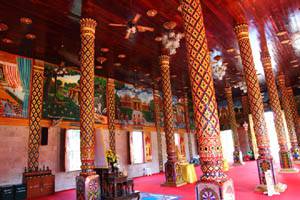
|
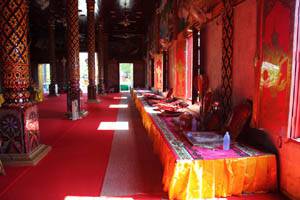
|
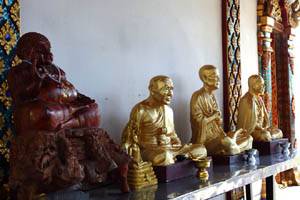
|
| Another inside view. | Chairs for monks on the side of the hall. | Other monk images outside of the hall. |
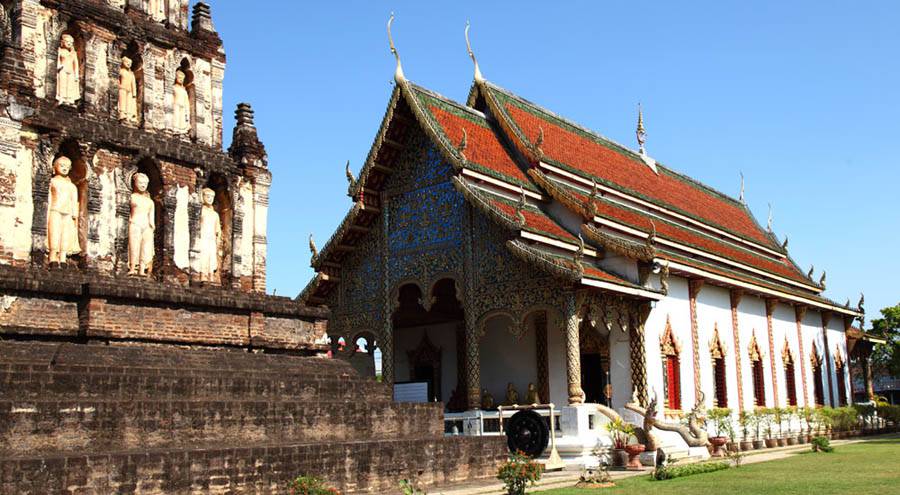
|
|
| A view from behind. The famous stepped pyramid styled chedi stands right behind the main hall. |
[Wat Cham Thewi] The stepped pyramid - Chedi Kukut (Ku Kuthi) |
| This is the famous stepped pyramid style chedi, Kukut. From the explanation board there, there is no clear evidence of when this chedi was built. There are two theories concerning its construction:
The chedi got its name "Kukut" from its tip part being broken off, where "Ku Kuthi" refers to a Buddhist monk's residence which may refer to the Buddha images placed in the arched bays around the chedi. Another name is "Suwan Chang-Kot Chedi".(or Suwana Chedi Jungkot) Chedi Khukut is estimated to be as old as the 17th century B.E (11th to 12th century A.D.). Its architectural style is similar to Satmahal Prasada in Polonnaruwa of Sri Lanka and it becomes the prominent model to square-base type of chedis built in the later time such as Suwan Chedi or Pathum Chedi, Wat Phra That Hariphunchai, and Chedi Leum (or Chedi Liam, Chedi Ku Kham) in Chiangmai. It's believed that the present form was a result of the renovation in the 18th century B.E. (12th to 13th century A.D.) by King Sawathisit as recorded in the Wat Ku Kut stone inscription. |
[Wat Cham Thewi] The octagonal base - Ratana Chedi |
| This is another famous chedi, a pavilion style chedi with a double tiered octagonal base, Ratana Chedi. It's said that from the architecture, it could have been build around
the 17th to 18th century B.E.(around 11th to 12th century A.D.) founded by Pha-Ya Sapphasit during the golden age of Hariphunchai kingdom. Situated just next to the main hall, diameter of the octagon base is 4.40 meters and the height of the chedi is 11.50 meters. The Buddha images in the first tier niches are in a standing position. The second tier, houses Buddha images in meditation in Hariphunchai style influenced by Dvaravati art of central Thailand. (Dvaravati is said the first Mon kingdom flourished from the 6th to the 11th century) |
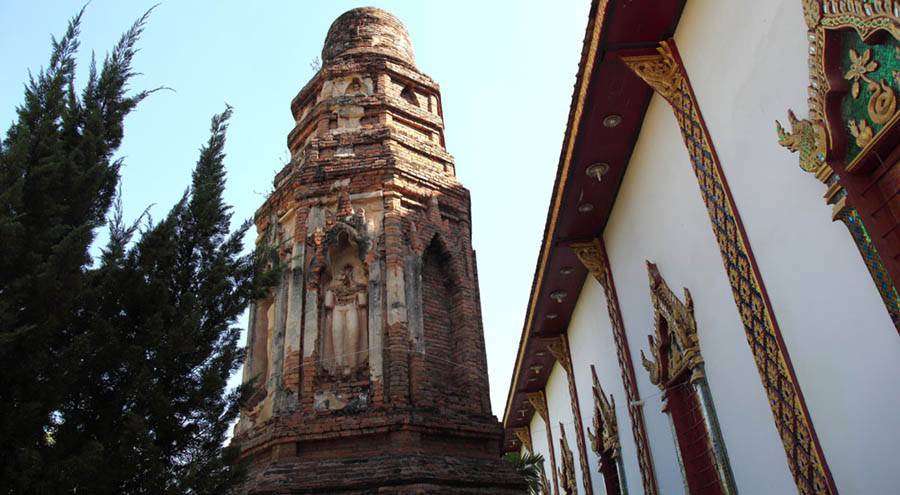
|
|
| The chedi next to the main hall, Ratana Chedi. Feeling a little lonely and Buddha images are broken. |
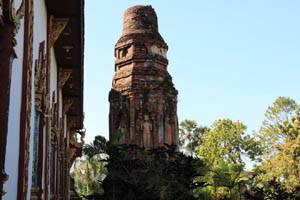
|
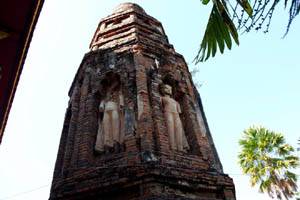
|
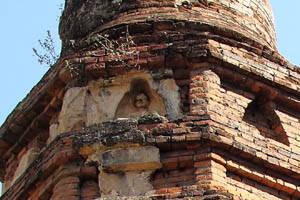
|
| Another angle. | The first tier. Standing Buddha images. | Upper tier. A Buddha image in meditation. |
[Wat Cham Thewi] Temple ground |
| The temple ground is wide, relaxing and peaceful. |
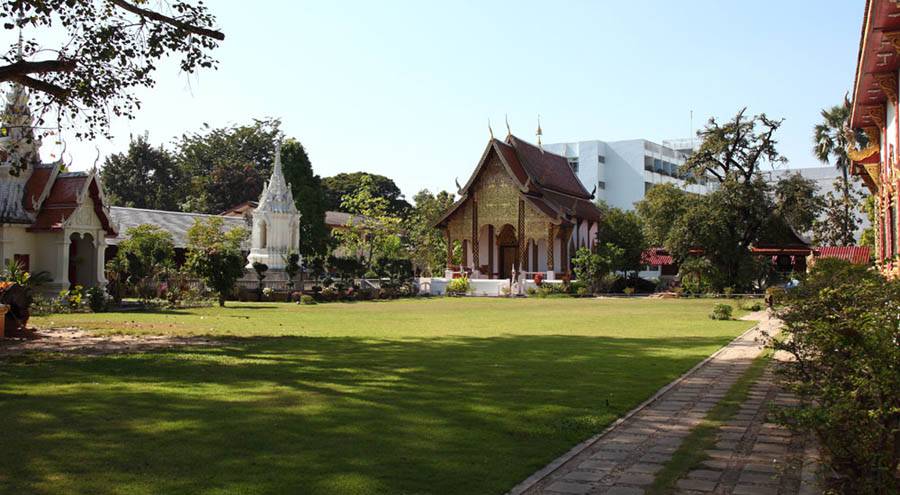
|
|
| Wide enough for a walk. |
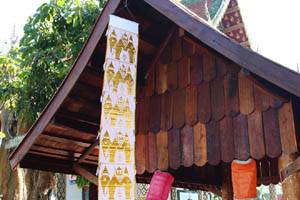
|
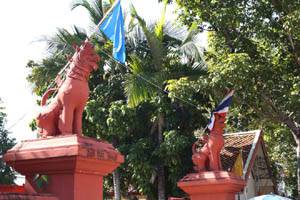
|
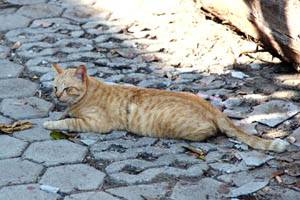
|
| Decoration seen often in Northern Thailand. | Lions protecting the entrance. | A relaxing cat. |
